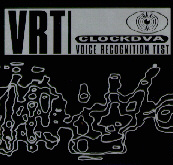
Not only is understanding required, but feeling, as phonetic manipulation conveys a myriad of complex emotional signals that effect the listener in deep and meaningful ways. The semantic, symbolic and spiritual conceptual ideograms contained within words is also fraut with problems if man is to distil such knowledge and feelings into an externalised machine or should want to! For thousands of years man has spiritualised and devised mystical concepts to explain the essence of existence. Joseph Weizenbaum says, "However much intelligence computers may attain now or in the future, there must always be an intelligence alien to genuine human problems and concerns."
The vocalisation of words is fundamental to existence. A biologically encoded system of communication that we don't even give a second thought to, although we understand the biology and physics there is still no explanation as to its origin. But ancient beliefs make connections with the spirit, breath and blood.
The Quiche, Arawak, Tasmanian and Zulu languages, among others, all use the same word for shadow and spirit, and in many regions it is believed that harm to the shadow means harm to the body. The Basutos used to be wary of walking on the river bank in case a crocodile should drag the shadow down into the water. To have a shadow was equivalent to living; he who had no shadow had no life. The dead in Purgatory recognised that Dante was alive when they saw that his figure, unlike theirs, cast a shadow on the ground, while the sinister image of the man who casts no shadow was for long a popular literary device, guaranteed to raise a shudder even as late as the nineteenth century. The shadowless man was like the zombie of voodoo - a body without a soul.
By Homer's day there had been a spiritual division of labour. Man was believed to have two souls, the thymos and the psyche. The thymos was a kind of portmanteau containing the consciousness, breath, blood-steam [sic], and also, upon occasion, emotions fed to it from the liver. the relationship between breath and mind, or consciousness, seems to have derived from an identification of thoughts with the words that expressed them, and of the words themselves with the breath that uttered them - a throw back to days before writing was invented. The concept of the soul as breath can be traced in the beliefs of many nations. The atman - the 'world soul' of the Hindus - comes from the word meaning 'to breathe'; the Slav duch, from 'breath' has come to mean 'soul' or 'spirit'; the English 'ghost' and German Geist are similarly derived. The thymos was what might be called the working soul. The psyche, in contrast, was quiescent during life, fulfilling its function by its presence alone. It was a life-principle, but a curiously anonymous one, when it left the body after death and floated phantom like down to Hades to become one of Homer's 'witless shades'.
Other civilisations had the same idea. In Egypt there were the ba and ka, in China the p'o and hun. The Hebrews had nephesh and ruach; in Zoroastrianism there were the daena and the urvan; and in Islam, a late creed influenced by Judaism and Christianity, the ruh and the nafs. Loosely speaking - very loosely in some cases, as the area is fertile with confusion - the first of these was the animating or activating soul, which usually perished with the body, while the second was the indestructible life principle that survived in the other world.
According to a passage in the Odyssey, it was only when the psyche was given a taste of blood and so reunited with its blood/breath/consciousness thymos (the meeting of two souls) that it became capable of utterance and aware of what was going on around it.
The magickal implications of the shadow and the word can be found in the works of Blavatsky and Crowley. According to some magickal theoreticians man stands at the present moment upon the threshold of a Wordless Aeon; that he must pass through the Desert of Set and emerge into the clear light of the Aeon of Maat, but without guidance from the supernal influences that have hitherto monitored the evolution of his consciousness. Charles Stansfeld Jones has produced cogent, but not entirely conclusive evidence to show that Crowley failed to fulfill the function of a Magus because of his inability to utter the Word of the Aeon of Horus (the present aeon), and that therefore the present aeon is itself the Wordless Aeon the advent of which has been dreaded and abhorred by the prophets of the past.
As growing world tensions threaten to escalate and to submerge humanity finally, a bridge crossing the Wordless Aeon has appeared almost miraculously and - like a web that spans Space and Time - it is able to transport into other dimensions, other aeons, those members of the human race that have understood the Word or Voice of the Silence.
Adi Newton
Voice Recognition Test 1994